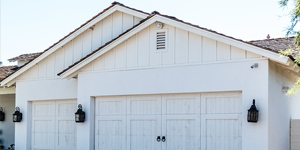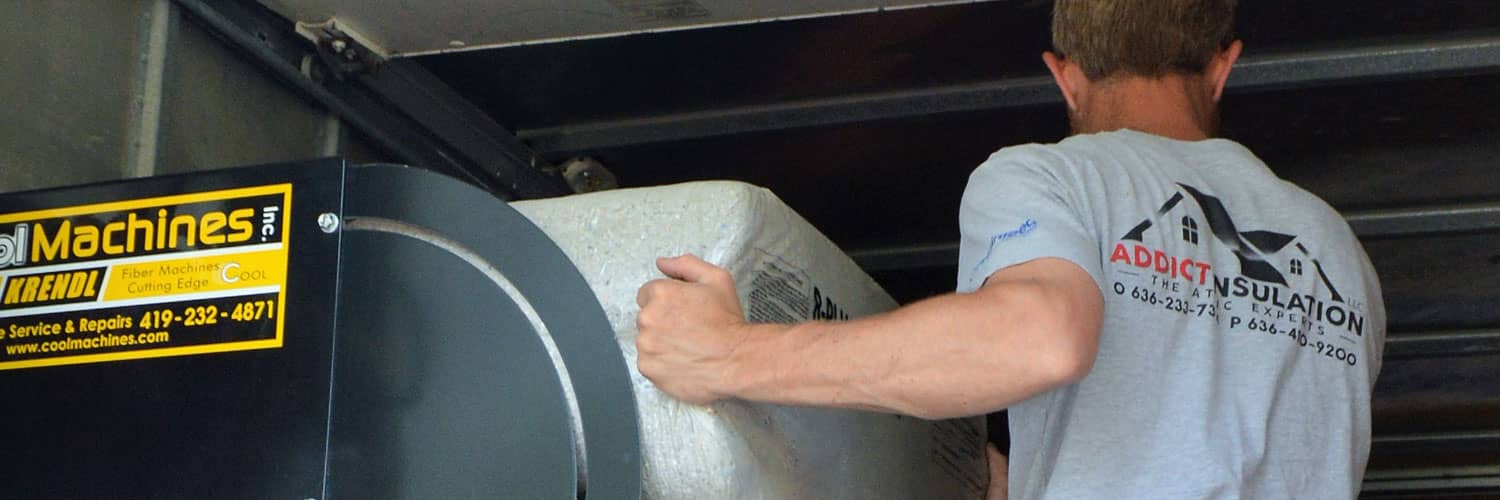St Louis - St Charles Insulation Company.


Preventing Extreme Temperture Changes
If you have a loft above your garage, you likely installed it to increase the square footage of your home and give your family more space to relax. This bonus room is a great idea for many reasons, allowing you to add extra functional space on the property without having to eat up precious backyard space. You may use your garage loft as a game room, living room, office, guest room, entertainment area, hobby room or play room for kids.
But while the positives outweigh the negatives when it comes to garage lofts, there is one drawback. Any room over a garage (which in and of itself is typically not heated) can be challenging to cool and heat. As a result, your garage loft may be too hot in summer and too cold in winter, which may prohibit family members from using those spaces in extreme weather.
There’s usually one big reason for these temperature swings and that is improper insulation. To achieve consistently comfortable indoor temperatures in the loft, you have to properly insulate it, as well as adjoining rooms and the garage itself. For that, you will need an insulation contractor in St Charles, St Louis and Hazelwood MO to help.
Garage Insulation
If you are like most people, you have left your unheated garage uninsulated. This would be fine if you didn’t have a fully functioning room above it. The unconditioned air from the garage tends to rise up to the loft, making your HVAC work harder than it should to maintain comfortable temperatures.
This is why the first step you should take is to insulate your garage, for which fiberglass, rigid foam, spray foam or cellulose would be appropriate.
Fiberglass Insulation
Fiberglass is the most popular and common due to its affordability. You can get it in pre-cut rolls, blankets or batts, which are relatively easy to install. If you’re not heating your garage, fiberglass batt insulation is the best option, as it gives your loft plenty of thermal resistance without breaking the bank on garage insulation.
Rigid Foam Insulation
This is a good option only if you plan to convert your garage into a usable living space. This type of insulation will prevent heat transfer through structural elements such as steel studs and wood. It’s available in stiff panels made out of polyurethane, which can be cut into any size you want and even installed under other materials, such as flooring.
Cellulose Insulation
Made from recycled newspaper, cellulose insulation is treated with fire retardant and is available in loose-fill form. if you are an eco-friendly homeowner, you will like this option. Choose this type of insulation if you’ve got an unfinished garage. This loose-fill material can take any shape and conforms well to the tight spaces between ceiling joists and beams.
It’s applied with a blowing machine for installation, which you could rent yourself. But this is really a job for a professional.
Spray Foam Insulation
Spray foam gives you the highest thermal resistance values, creating a solid barrier that guards against air and moisture gaps. It’s more expensive than other insulation options, though.
Garage Ceiling Insulation
At the same time, you’ll have to add insulation to your garage ceiling. Spray foam is your best bet, as it conforms to the ceiling cavities and closes off gaps that could leak air.
Loft Insulation
When you first built the loft, you should’ve had insulation added. But if you didn’t and now you’re realizing you need it, you’ll have to add insulation to three main areas: floors, exterior walls, and the knee wall.
1. Floor Insulation
Floor insulation is thinner than ceiling insulation, but it is less expensive to install while giving you comparable thermal resistance.
2. Exterior Wall Insulation
To reduce heat loss, you should insulate the exterior walls of your loft as well, installing your material of choice on the inside of the wall. You could do either fiberglass batts or spray foam for this.
3. Knee Wall Insulation
Knee walls are the short walls found underneath sloped ceilings, separating the loft from the attic space above your garage. If this area is not insulated, your energy consumption and spending will increase. Rigid foam insulation is the best option here, and it should be installed on the wall itself and the attic floor.
Knee walls are the short walls found underneath sloped ceilings, separating the loft from the attic space above your garage. If this area is not insulated, your energy consumption and spending will increase. Rigid foam insulation is the best option here, and it should be installed on the wall itself and the attic floor.
Loft Room Insulation
Hopefully, you had insulation added to your loft when it was constructed. This is always the easiest way. Insulating it after the fact will involve drywall and flooring removal. But you will enjoy better comfort and lower energy bills in the long run.
Call Addict Insulation in St. Charles MO
Our insulation contractors specializing in garage insulation in St Charles, St Louis and Hazelwood MO would be happy to visit your home for a consultation on the state of your garage loft insulation. contact us at 636-233-7314.
Energy Saving BlogPopular Articles
- FAQs About Insulation in Missouri
- What Areas Should You Insulate Before Winter?
- The Greatest Risks to Your Home Caused by Poor Insulation
- Why Your Utility Bills Are So High and What You Can Do About It
- Can You Put New Insulation Over Old?
- Here Are 3 Ways Your Attic Could be Contaminated
- How Home Insulation Works in the Summer
- Tips and Tricks For Summer Insulation
- How to Fix Indoor Condensation
- Choosing the Right Spray Foam Contractor
- Why You Need Power Washing This Spring
- Don't Let Air Escape Your Home
- Tips For Saving on Your Energy Bills This Summer
- Should I Install a Radiant Barrier in My Home?
- Are You Wondering if Your Attic Has Enough Insulation?
- Do I Have to Replace Wet Insulation?
- Insulating Your Sunroom
- Should You Insulate Your Outdoor Spaces?
- All About Removing Insulation
- What to Know About Insulating a Crawl Space
- How to Spot Mold in Your Wall Insulation
- How to Prevent Moisture in Your Warehouse With Spray Foam Insulation
- What Factors Cause Heat Gain?
- The Problems That Come With Improper Insulation
- Insulation FAQs
- Why Should You Check the Insulation When Buying a Home?
- Why Seal and Insulate Your Home?
- Home Insulation: Safety and Health
- Should You Remove Old Insulation During Replacement?
- Can I Stay Inside My Home During Spray Foam Insulation Installation?
- Pros and Cons of Converting an Attic
- Pros and Cons of Converting an Attic
- When’s the Best Time to Insulate Your House?
- The Difference Between Blown Insulation and Spray Foam Insulation
- Is Your Garage Loft Too Hot or Too Cold? Heed These Tips
- 6 Health Benefits of Having a Quiet Home
- Insulation Prep is Critical For Installation
- The Dangers of Removing Insulation on Your Own
- What’s the Most Eco-Friendly Insulation?
- 7 Benefits of Spray Foam Insulation
- What is the Proper Insulation For Vaulted Ceilings?
- Signs Your Crawlspace Insulation Should be Replaced
- Why You Should Insulate Your Basement Walls
- Most Effective Ways to Soundproof Your Home Office
- How to Insulate an Old House
- 4 Tips to Make Your Attic More Energy Efficient
- Attic Insulation Problems: 5 Things to Look Out For
- What Causes Condensation on Interior Walls?
- How Deep Should Your Insulation Be?
- What to Consider When Choosing an Insulation Company
- Can You Add New Insulation Layers Over Old Ones?
- When Should You Remove Insulation?
- 7 Tips For an Energy Efficient Summer
- Creating a Healthy, Comfortable and Productive Workspace When Working From Home
- Why is Roof Ventilation Just as Important as Insulation?
- Why Spring is a Good Time to Insulate Your Attic
- 5 Signs of Damaged or Insufficient Insulation
- Is the Insulation in Your Walls Making You Sick?
- Under-Insulated Areas You May Be Overlooking
- The History Of Insulation.
- Pros and Cons of Attic Insulation
- Do You Need Insulation When Finishing a Basement?
- What is Drill and Fill Insulation?
- Which Insulation is Best for Garage Walls?
- How Air is Escaping Your Home and How to Prevent It
- 10 Things You Must Absolutely Insulate Before Winter
- 5 Reasons To Not DIY Insulation
- 5 Signs of an Under-Insulated Home
- 5 Benefits of Blown Insulation
- Cellulose vs. Fiberglass Insulation
- When is Insulation Removal Necessary?
- Tips to Keep Your Home Cool This Summer
- What is the Best Insulation for a Flat Roof?
- 5 Benefits of Power Washing
- Q & A About Insulation
- Reviews
- Energy Saving Blog






